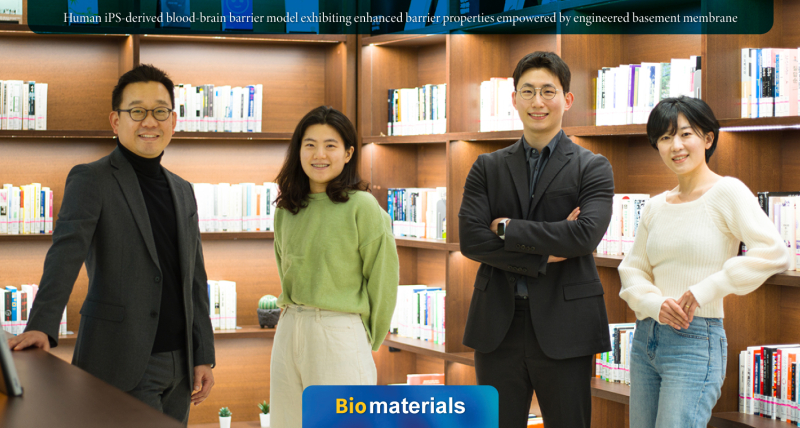
A research team, jointly led by Professor Tae-Eun Park in the Department of Biomedical Engineering at UNIST and Professor Dong Sung Kim from POSTECH has unveiled a highly ameliorated human BBB model accomplished by an ultra-thin ECM hydrogel-based engineered basement membrane (nEBM), which is supported by a sparse electrospun nanofiber scaffold that offers in vivo basement membrane (BM)-like microenvironment to brain microvascular endothelial cells (BMECs).
BBB is a biological barrier consisting of vascular endothelial cells, basal membranes surrounding them, adipocytes, and vascular surrounding cells that only allow access to substances essential for brain function, protecting the brain from invasion. On the other hand, this is a forbidden door that almost completely controls the passage of drugs for brain diseases and has been a major obstacle to drug delivery.
To date, many BBB models have been developed to simulate these barriers for the development of brain disease treatments. However, due to the difficulty of simulating the complex and sophisticated basal membranes in vivo, porous membranes made of plastic (PETE, PC, PDMS) were mainly used. This has a limitation in that it does not provide a bio-like environment to cells due to large physical and structural differences from the basal membrane of the living body.
In doing so, the joint research team introduced a highly ameliorated human BBB model accomplished by an ultra-thin ECM hydrogel-based engineered basement membrane (nEBM), which is supported by a sparse electrospun nanofiber scaffold that offers in vivo basement membrane (BM)-like microenvironment to brain microvascular endothelial cells (BMECs).
The research team also successfully built an in vitro model that simulates the bio-barrier function of the human blood-brain barrier by co-culturing vascular endothelial cells, star glial cells, and vascular surrounding cells derived from human stem cells. It has about twice as high physical barriers as conventional models using plastic porous membranes, while also showing the activity of drug-releasing proteins such as BCRP and MRP, one of the large functions of the blood-brain barrier. The research team verified that cells showed improved functions in response to physical and biochemical stimuli of the basal membrane simulated by the nanofiber membrane.
It also developed a stroke model, a cerebrovascular disease that ranks third among Korean causes of death. By temporarily limiting the supply of oxygen and nutrients, the stroke environment was simulated, which damaged the barrier of blood vessels and reproduced the symptoms of stroke in which immune cells in the bloodstream moved to the brain. It also suggested that the blood-brain barrier recovers its function when stroke treatment is administered.
Their findings have been published in the December 2022 issue of Biomaterials.
Journal Reference
Jeong-Won Choi, Jaeseung Youn, Dong Sung Kim, et al., “Human iPS-derived blood-brain barrier model exhibiting enhanced barrier properties empowered by engineered basement membrane,” Biomaterials, (2023).